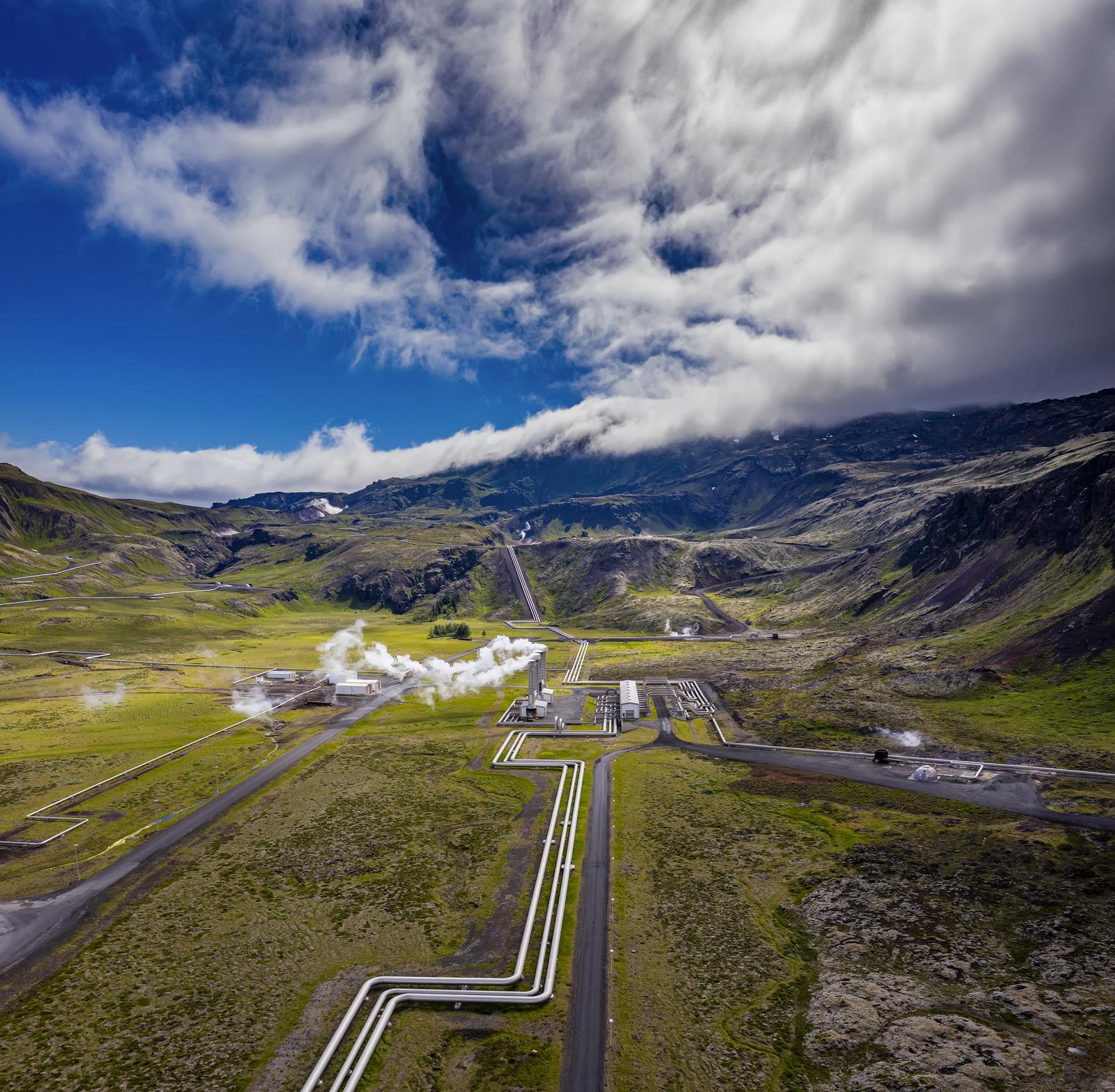
Geothermal Power in Iceland
When you think of Iceland, you probably picture stunning waterfalls, glaciers, and the northern lights. But beneath its rugged surface lies one of its greatest treasures: geothermal energy. Iceland sits right on top of the Mid-Atlantic Ridge, making it a geothermal hotspot, literally. The island has leveraged its natural advantage to create one of the cleanest and most efficient energy systems in the world. In this article, we’ll explore how Iceland utilises geothermal power, its origins, the source of the energy, and what the future holds.
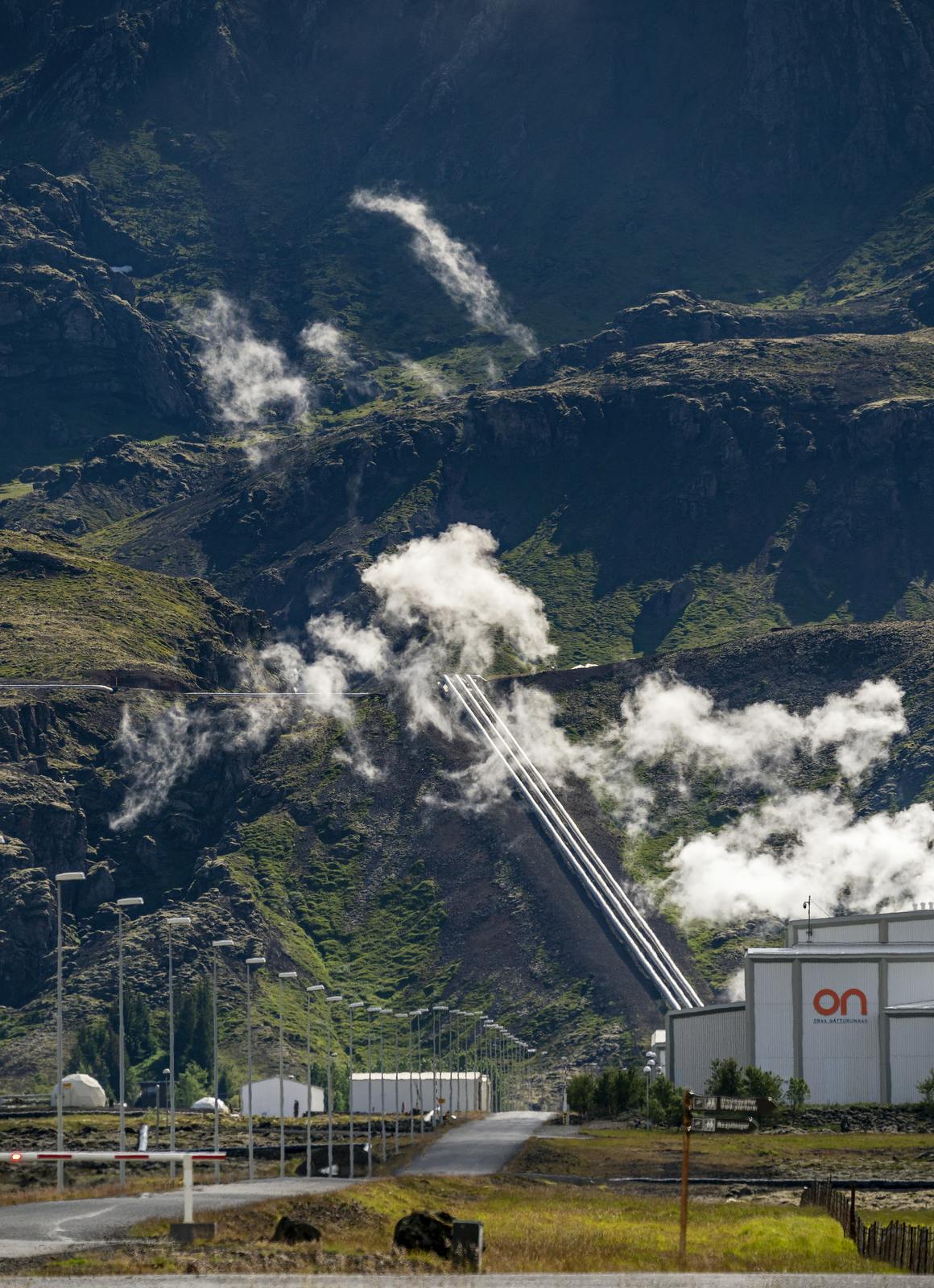
When Did Iceland Start Using Geothermal Energy?
Iceland’s relationship with geothermal energy dates back to the age of settlement, 11-12 hundred years ago. The use of thermal springs for bathing is frequently mentioned in the ancient Sagas. Þvottalaugarnar were hot pools used for washing by housewives and maids in Reykjavík from the early 19th to the 20th century.
In 1907, the first technical application of geothermal heat occurred. By 1910, Icelanders were already using hot spring water to heat swimming pools in Reykjavík. But the real breakthrough came in 1928 with the founding of the Reykjavík District Heating Company, a significant milestone that laid the foundation for the organised, large-scale use of geothermal heating.
But things took off during the 1970s oil crisis when Icelanders were faced with skyrocketing fossil fuel prices. Iceland had to find local, renewable alternatives, and geothermal energy was an obvious choice; the country invested heavily in developing its resources. By 1984, Iceland had linked up its regional power grids, making its energy system even more efficient and robust.
How Iceland Uses Geothermal Energy Today
Electricity Generation
Today, approximately 25-30% of Iceland’s electricity is generated from geothermal power. The rest comes nearly all from hydropower, making Iceland one of the world’s greenest countries in terms of energy. As of 2020, Iceland's installed geothermal power production capacity was 799 megawatts. The primary methods of geothermal electricity generation include:
- Dry steam plants use steam directly from underground to spin turbines.
- Flash steam plants draw hot water under high pressure from underground, which then flashes into steam when the pressure is released.
- Binary cycle plants transfer heat from geothermal water to another liquid with a lower boiling point, turning it into vapour to spin the turbine.
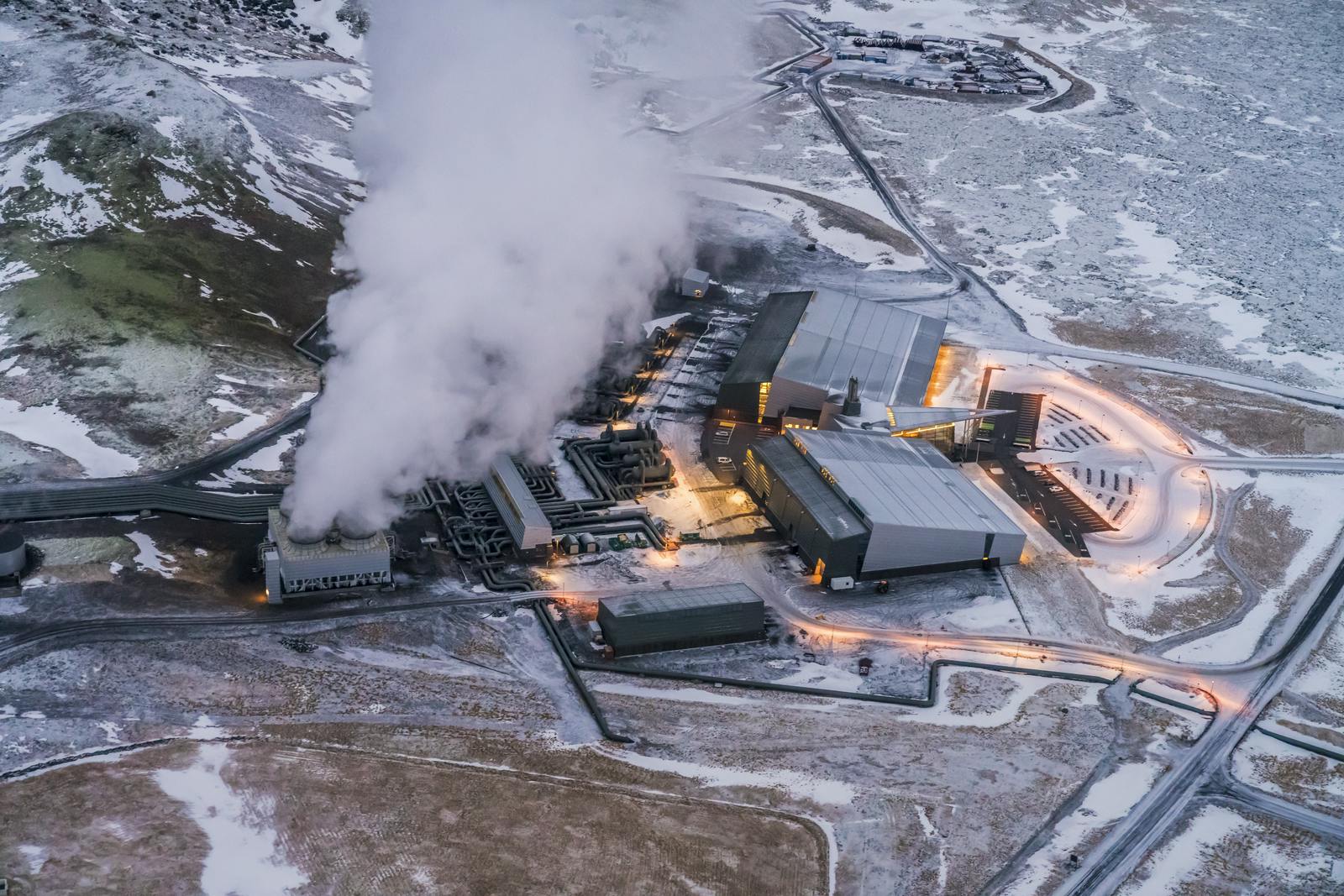
Direct Heating
Electricity is great, but the real hero in Iceland is direct heating. An incredible 90% of homes in Iceland are heated using geothermal water piped straight from the ground. That means no burning oil or gas, just pure, natural heat from below.
Other Various Uses
Icelanders have found plenty of creative ways to use geothermal energy beyond just heating homes:
- Snow melting systems under sidewalks and roads keep winter streets clear.
- Swimming pools and spas, such as the famous Blue Lagoon, are heated with geothermal water.
- Greenhouses stay warm year-round, allowing for the cultivation of local produce even in harsh winters.
- Fish farms use warm water to raise fish species that wouldn’t otherwise thrive in Iceland's chilly environment.
Where Does the Geothermal Energy Come From?
Iceland sits on a tectonic boundary where the Eurasian and North American plates meet. Volcanic activity creates hot spots under the Earth’s crust. Specialists drill wells into these hot reservoirs, sometimes as deep as 2,000 metres (over a mile), to access water that can reach temperatures of 250°C (482°F) or higher. The heat is brought to the surface, where it’s used directly or turned into electricity.
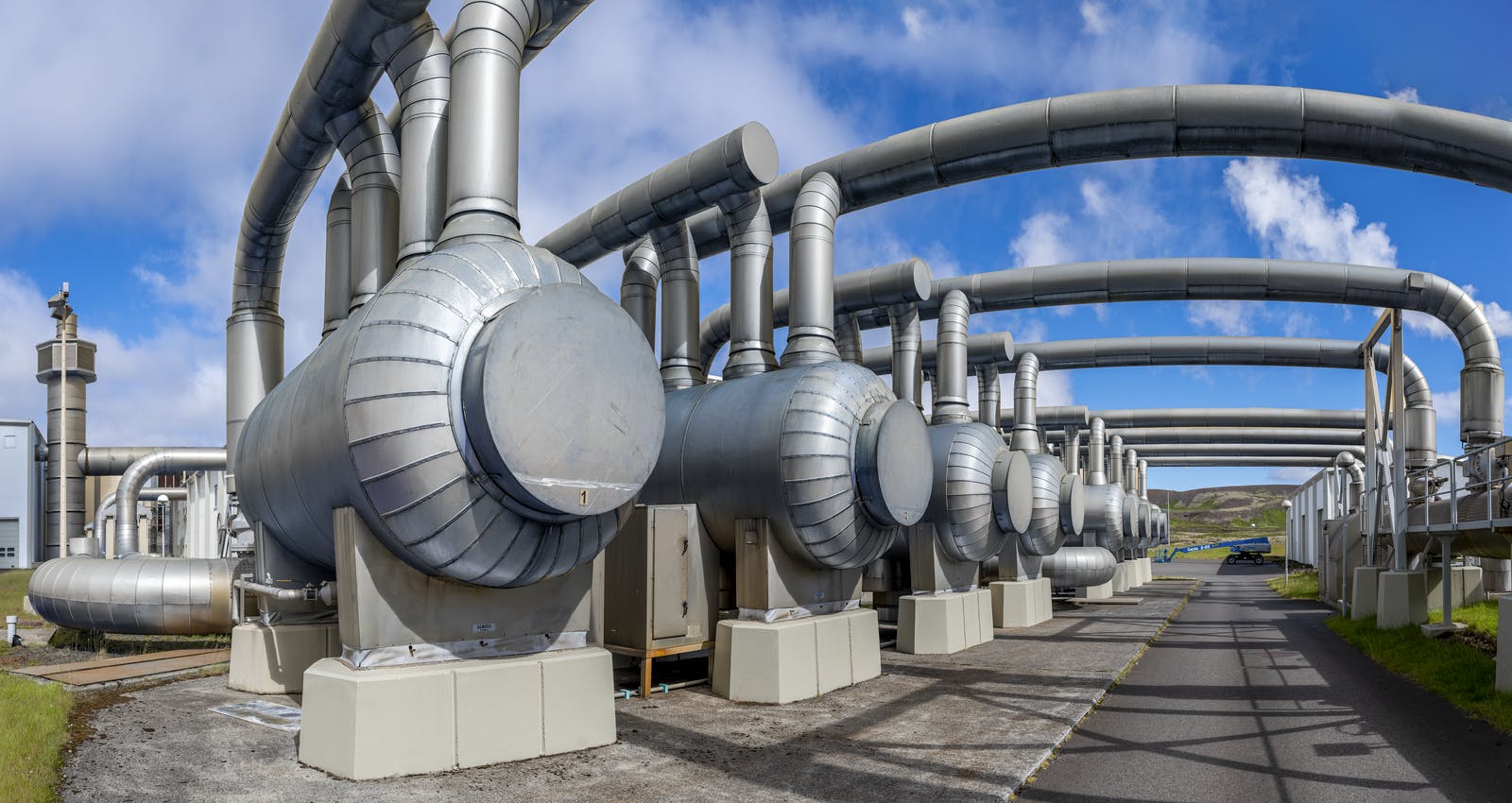
Iceland’s Geothermal Power Plants
Iceland has several major geothermal power stations that supply both electricity and hot water:
Hellisheiði Power Station
Iceland's largest geothermal plant, near Reykjavík, Hellisheiði, produces 303 megawatts (MW) of electricity.
Nesjavellir Geothermal Power Station
Near Þingvellir National Park, it produces 120 MW of electricity, as well as hot water for Reykjavík.
Reykjanes Power Station
Located on the southwest coast, the station generates 100 MW of electricity from high-temperature geothermal fields.
Þeistareykir Power Station
In northeast Iceland, the station produces 90 MW of electricity and has been operational since 2017.
Svartsengi Power Station
Near Grindavík, home of the Blue Lagoon, it produces 75 MW of electricity and 150 MW of hot water.
Krafla Power Station
Near the Krafla volcano in northern Iceland, it has produced 60 MW of electricity since 1977.
Bjarnarflag Power Station
Iceland’s first geothermal power station, which has been operating since 1969, produces 3 MW, a small but historic amount.
You can check out a detailed list of Iceland's geothermal plants here
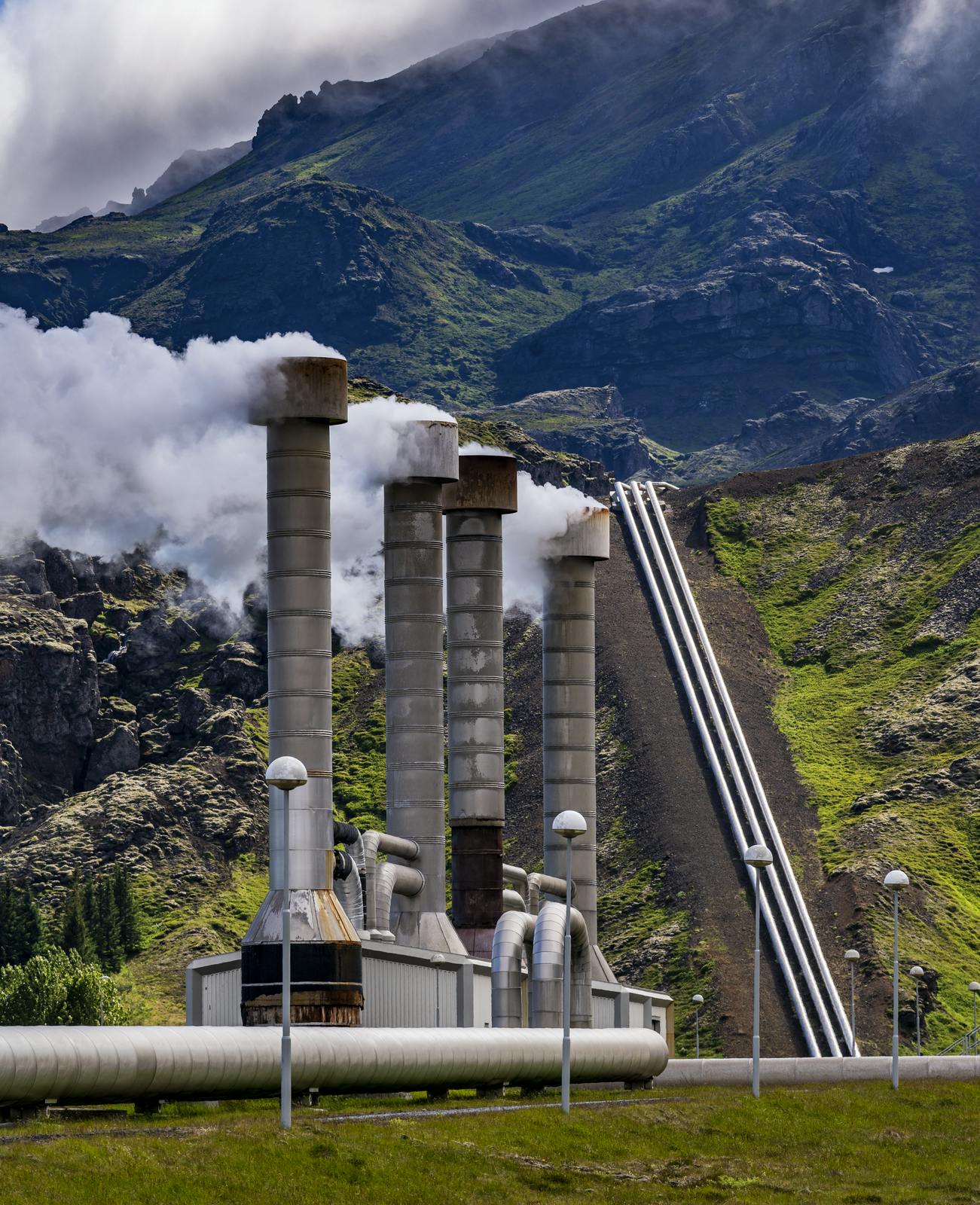
Is Geothermal Energy Completely Clean?
Geothermal energy is one of the cleanest forms of energy, but it’s not entirely without impact:
- Hydrogen sulfide emissions: Some plants release small amounts of this gas, which smells like rotten eggs but is monitored closely.
- Land use: Drilling and plant construction change the local landscape.
- Minor earthquakes: In rare cases, drilling and the injection of water back underground can trigger small earthquakes.
The good news is that Iceland has strict environmental regulations to minimise and carefully monitor these risks.
The Future of Geothermal Energy in Iceland
Iceland isn’t resting on its laurels. One of the most exciting projects is the Iceland Deep Drilling Project (IDDP). Scientists are drilling even deeper into "supercritical" zones, where water behaves like both a liquid and a gas. If successful, these wells could produce up to 10 times more energy than conventional geothermal wells. That’s a potential game-changer for the global energy sector.
Iceland has mastered the art of harnessing the earth’s natural heat to produce reliable, clean energy. From residential houses to breathtaking spas, geothermal power touches nearly every part of life in Iceland. As technology advances, Iceland’s geothermal success story could offer valuable lessons to the rest of the world.
FAQ
When did Iceland start using geothermal energy?
People have used geothermal springs for bathing since the age of settlement. In modern times, the first recorded technical use occurred in 1907, with significant developments beginning in the 1920s.
How much of Iceland’s electricity comes from geothermal?
Approximately 25-30% of Iceland's electricity is generated from geothermal sources.
What else does Iceland use geothermal energy for?
Heating homes, melting snow, powering swimming pools, running greenhouses, and fish farming.
Are there any downsides?
Some minor air emissions and land use impacts are associated with geothermal energy; however, it is generally considered a cleaner energy source compared to fossil fuels.







